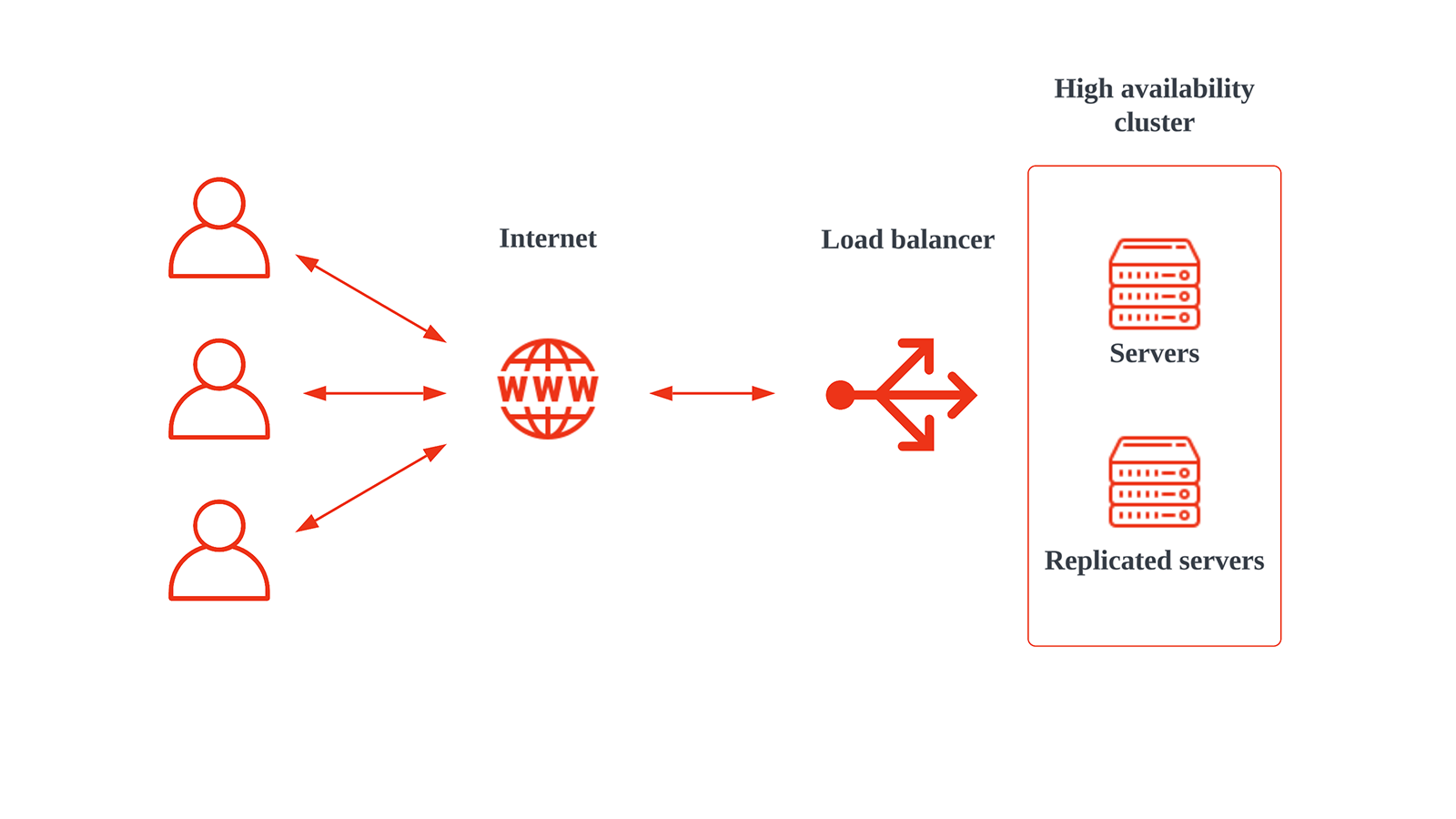What is High Availability?
10 Jun 2023
High availability (HA) is the ability of a system or application to continue functioning without interruption despite any failures in the underlying infrastructure.
HA is essential for cloud-based solutions that need to be accessible 24/7 and handle unpredictable workloads.
Key Elements of HA Architecture
To design a HA architecture, four key elements should be considered:
- Redundancy: Having multiple components that can perform the same task, so that if one component fails, another one can take over. For example, having multiple instances of a web server or a database server can provide redundancy and eliminate single points of failure.
- Monitoring: Checking whether the components are working properly and detecting any issues or anomalies. For example, using health probes or metrics to monitor the performance and availability of the servers and services.
- Failover: Switching from a failed component to a working one automatically or manually. For example, using load balancers or traffic managers to distribute the requests among the available servers and redirect them in case of failure.
- Distributed caching: Storing frequently accessed data in a cache system that is shared by multiple app servers, typically maintained as an external service to the app servers that access it. For example, using Redis to store and retrieve data in various data structures with low latency and high scalability.

Cloud Provider Features for HA
Different cloud providers offer different capabilities and features for achieving HA. For example, Oracle Cloud Infrastructure provides availability domains and fault domains within a region, which are isolated and fault-tolerant units of infrastructure that can host the cloud resources. Azure provides availability zones and availability sets within a region, which are logical groupings of data centers and virtual machines that can ensure redundancy and resiliency. Google Cloud provides regions and zones within a region, which are independent locations that can host the cloud resources.
Benefits of HA Setup on Cloud
Having a HA setup on cloud can provide several benefits for your applications and data, such as:
- Increased uptime and accessibility: Your applications and data can remain available and accessible even if some components fail, reducing the risk of downtime and loss of revenue or reputation.
- Improved performance and scalability: Your applications and data can respond faster and handle more requests by using distributed caching and load balancing techniques, improving the user experience and satisfaction.
- Reduced cost and complexity: You can leverage the cloud provider features and services for HA, such as availability domains/zones/sets, load balancers, traffic managers, Redis, etc., without having to invest in your own infrastructure or manage it yourself.
Best Practices for HA Setup on Cloud
To achieve the best results from your HA setup on cloud, you should follow some general guidelines and best practices, such as:
- Use autoscaling to adjust the number and size of your cloud resources according to the demand and workload.
- Choose between complexity and simplicity when designing your HA architecture, balancing the trade-offs between cost, performance, and reliability.
- Implement multiple application servers to handle the requests from the clients and distribute them across different availability domains/zones/sets for redundancy.
- Enable monitoring to check whether the components are working properly and detect any issues or anomalies, and use alerting to notify you of any problems or failures.
- Implement load balancers and traffic managers to distribute the requests among the available servers and redirect them in case of failure, and use health probes to check the availability of the servers and services.
- Configure failover setup to switch from a failed component to a working one automatically or manually, and use backup and restore options for your data and applications.
- Configure distributed caching options for your data and applications using technologies such as Redis, to reduce the latency and load on the database or the API server, and provide coherence and resilience across requests to multiple servers.
- Try clustering techniques to group multiple servers or services together as a single unit, and use replication or synchronization to ensure data consistency and availability among them.
- Test your HA configuration by simulating failures and verifying the failover mechanisms, and measure the response time and performance of your application with and without HA.
Final Thoughts
In this article, you learned about the concept of high availability (HA) on cloud and its importance for cloud-based solutions. You also discovered the key elements of HA architecture, such as redundancy, monitoring, failover, and distributed caching. Additionally, you explored the different cloud provider features for HA, such as availability domains/zones/sets. Finally, you understood the benefits of having a HA setup on cloud for your applications and data, as well as some best practices to follow for achieving the best results from your HA setup on cloud.
